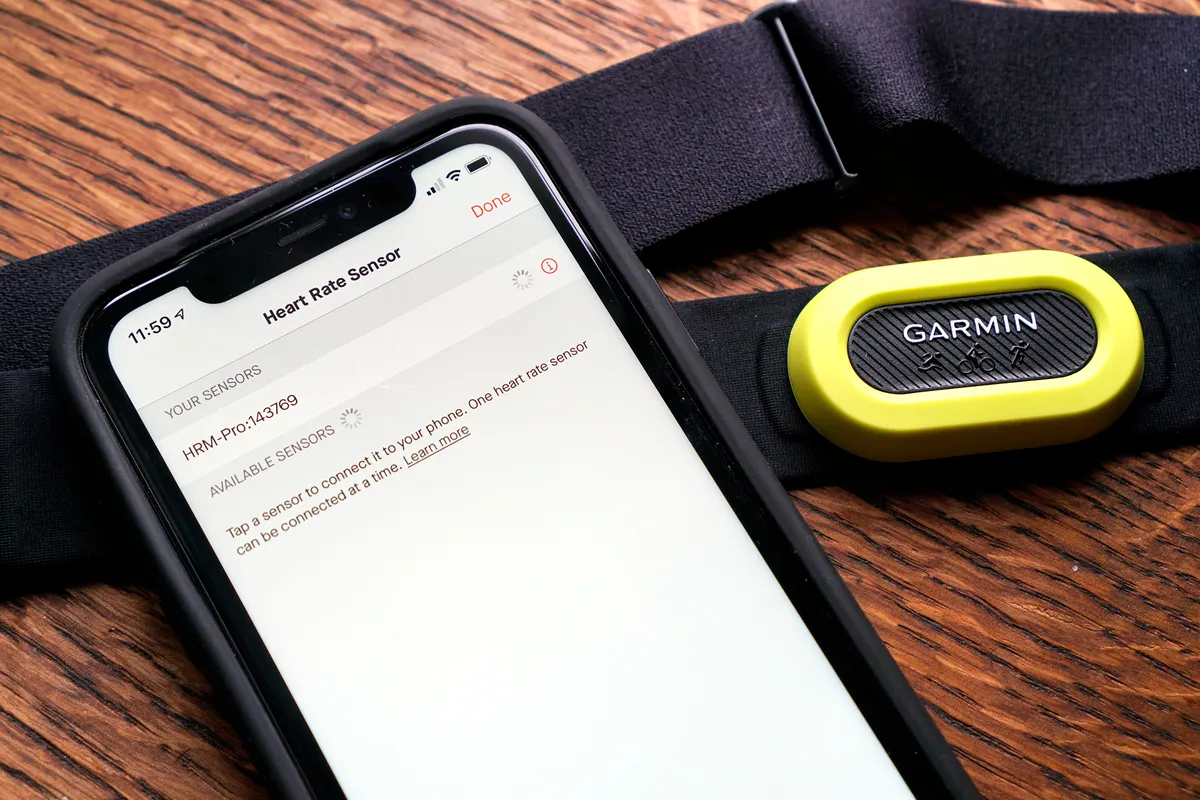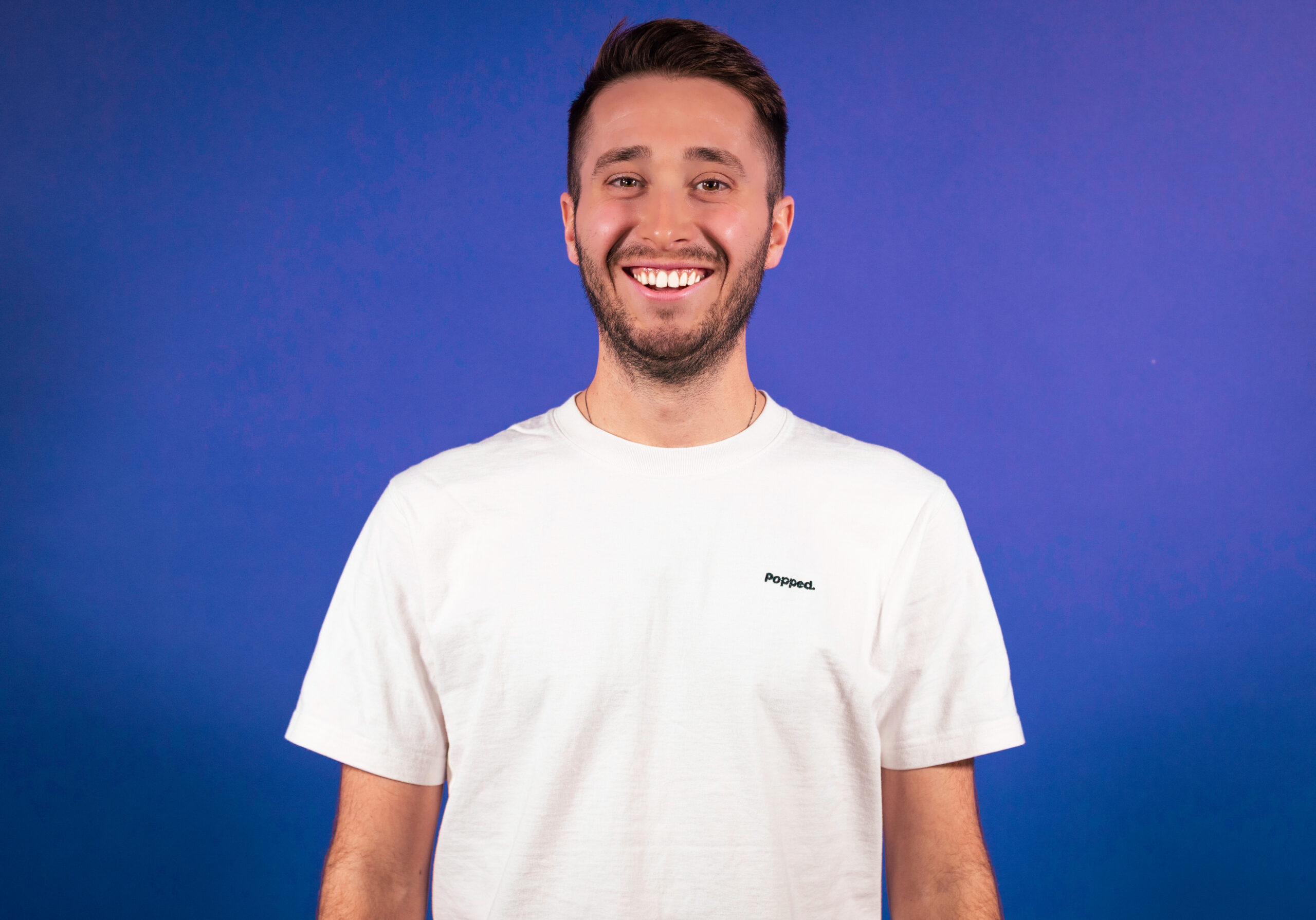Top-end cycling computers are very, very expensive. The flagship Garmin Edge 1050 is a whopping £649.99 / $699.99 / €699.99 – that’s the same as you’d pay for an iPhone 13.
While the iPhone 13 isn't Apple's latest model, it’s still an incredibly powerful and versatile piece of tech.
With the Garmin's smaller screen, more basic user interface and fewer functions compared to a smartphone, it raises a serious question: why not just use your phone for ride tracking? After all, most of us already carry one.
In this head-to-head, we’ll break down whether the Garmin Edge 1050 or an iPhone is the better tool for your cycling computer needs.
Garmin Edge 1050 vs iPhone 13 specs compared

| Garmin Edge 1050 | iPhone 13 | |
|---|---|---|
| Display size | 3.5in transmissive LCD | 6.1in super retina XDR |
| Brightness | 1,000 nits | 800 nits (1,200 nits peak) |
| Resolution | 480×800 pixels | 2532×1170 pixels |
| Battery life | Up to 20 hours (GPS mode) | 17 to 19 hours (mixed use) |
| Processor | Info not available | A15 Bionic (6-core CPU, 4-core GPU) |
| Memory | 64GB | 128GB/256GB/512GB |
| Bluetooth | BLE | Bluetooth 5.0 |
| Wi-Fi | Yes | Yes |
| GNSS | Multi-band (GPS, GLONASS, Galileo, BeiDou) | Yes (GPS, GLONASS, Galileo) |
| Other connectivity | ANT+, Garmin Connect, Group Ride, Varia radar | 5G, Wi-Fi, Bluetooth |
| Camera | N/A | Dual 12MP, 4K video recording |
On paper, it’s easy to consider the iPhone a slam dunk in terms of specs, but it’s not quite that simple. Let’s break it down.
Screen

The Garmin Edge 1050 is large for a cycling computer, but dwarfed by the iPhone’s 6.1-inch Super Retina XDR display.
Despite this, Garmin’s screen is more than sufficient to show all the data you need on a ride. It’s also much easier to see in direct sunlight, where smartphones can sometimes struggle.
The Edge 1050’s big, chunky bezels are annoying, especially next to the iPhone’s sleek, edge-to-edge design.
But while the iPhone’s display is miles ahead in terms of resolution and sharpness, does it really matter for a cycling computer? You’re not exactly going to watch Netflix mid-ride.
UX

There’s no getting around the fact that modern smartphones offer a smoother and more intuitive experience than any bike computer.
The Garmin Edge 1050 has a better interface than previous Garmin Edge models, but it’s still nowhere near as responsive as the iPhone 13 running iOS (or any other smartphone for that matter).
Garmin’s UI feels sluggish by comparison, and even the touchscreen can be hit or miss when you’re sweaty or wearing gloves.
Using the iPhone for ride tracking felt familiar and fluid. You can flick between apps, multi-task, and even grab a quick photo or message mid-ride without skipping a beat.
Cycling apps such as Strava, RideWithGPS and Cyclemeter all work smoothly on the iPhone, allowing for quick start-stop ride tracking.
However, managing multiple apps can be a battery killer (more on that in a second), and switching between functions such as navigation and messaging isn’t always practical while riding.
In contrast, the Garmin’s UI is built for focus – recording data and navigation is its primary function.
While not as sleek or versatile as the iPhone’s interface, it’s simple, functional and gets the job done – and without distractions.
Plus, the tactile buttons on the Garmin are a godsend when you’re riding in the rain or with cycling gloves on.
Battery life

Here’s where the Garmin truly pulls ahead.
The Edge 1050 is built to last 20 hours on a single charge and I found this to be fairly accurate during several demanding rides.
Over the course of a weekend bikepacking trip, it powered through two full days of riding without needing a charge. That’s the kind of reliability you want when you’re out on the road for long hours.
Likewise, the Garmin Edge 840 I use frequently will do two days, or about 16 hours, on one charge. If you ride more than me, you’ll charge more, but unless you’re an ultra-endurance rider, you’ll get a few rides out of one charge.
The iPhone 13, on the other hand, struggles when used as a dedicated cycling computer.
I can’t remember the last time I got two days of even light use out of one charge – maybe when the battery was new.
Regardless of theoretical battery life, navigating with GPS, recording rides, and running apps such as Strava or RideWithGPS drains the battery much faster.
In a side-by-side test on a four-hour ride, my iPhone’s battery dropped by 35 per cent, whereas the Garmin barely dipped below 90 per cent. Older phones (mine is around three years old) will suffer from battery degradation, making this disparity even worse over time.
If you’re going for short rides or using a power bank, the iPhone might suffice.
However, for long rides, multi-day trips, or reliability in remote areas, the Garmin's robust battery life is a significant advantage.
GPS and ride accuracy

One area where cycling computers truly outperform smartphones is GPS accuracy.
Garmin’s Edge series is built with precision tracking in mind, offering GPS, GLONASS and Galileo satellites to ensure reliable location data.
The Edge 1050 also has an integrated barometric altimeter for accurate elevation tracking, which is vital if you care about how much climbing you've done.
In my test, I took both devices on a loop through city streets, suburban roads and tree-covered trails.
While the iPhone 13 tracked my general route, its performance in the densely built-up areas was noticeably less precise, and it occasionally jumped around under thick tree cover.
The Garmin, on the other hand, was consistently spot-on, mapping the ride with a higher level of precision.
For those who need accurate metrics for performance tracking or navigation on remote trails, the Garmin wins comfortably in this category.

It also supports external sensors via ANT+, enabling you to connect power meters, cadence sensors and heart-rate monitors.
Although many modern devices also have Bluetooth connectivity, ANT+ isn’t possible on an iPhone without extra adaptors.
Mounting and durability

One of the most immediate challenges of using a phone as your primary cycling device is figuring out how to mount it securely on your handlebar.
While there are many phone mounts available, they typically don’t offer the same level of integration and stability as dedicated cycling computer mounts.
Most cycling computers ship with custom mounts designed to keep the unit securely in place, even on rough terrain.
Although high-quality mounts will perform better, most phone mounts are bulkier and rely on rubber straps or spring-loaded clamps to stay put.
The size difference between a cycling computer and a phone is also worth considering.
This extra screen real estate of a smartphone might seem appealing at first, but it can make the phone feel oversized on the handlebar.
Another major consideration is the risk of damage.
Phones are not designed with the rough and tumble of cycling in mind.
Even with a case, a phone's glass screen is vulnerable to cracks, scratches or water damage if exposed to the elements during a ride. The iPhone 13 is IP68-rated, meaning it can withstand some water and dust, but it's not impervious to rough treatment over time.
The IPX7-rated Edge 1050 by comparison is designed specifically for harsh conditions. Garmin devices are built with ruggedness in mind, usually featuring more secure housing and shock-resistant materials.
While it's not infallible, if your Edge 1050 takes a tumble it's got a better chance of survival than a phone.
Apps and additional features

The Garmin 1050 is packed with cycling-specific features. Garmin’s ClimbPro, Strava Live Segments and advanced training metrics are aimed squarely at serious cyclists who want to push their performance.
I particularly appreciate the ClimbPro feature, which provides detailed information about every climb, enabling me to pace myself efficiently.
The iPhone, however, offers a more flexible ecosystem.
Strava, Cyclemeter and RideWithGPS are popular apps that deliver decent ride metrics and navigation. RideWithGPS stands out for its route planning, but even its interface doesn’t match the detailed navigation Garmin offers.
That said, the iPhone enables you to connect to music, social media and messaging apps – making it a more versatile option for short, casual rides.
However, using these apps on the iPhone comes with the inevitable downside – battery drain. Running Strava or RideWithGPS on a long ride, along with music and maps, will have you searching for a charger before the day is done.
What about other bike computers?

In this space, competitors such as the Wahoo Elemnt Roam and Hammerhead Karoo 2 also deserve a mention.
The Wahoo Elemnt Roam offers similar battery life and ease of use as Garmin, although with fewer training-specific features.
The Karoo 2, meanwhile, has an Android-based operating system and a slicker UI than Garmin, but its battery life can’t compete and it’s still not as intuitive as using a smartphone.
Garmin Edge 1050 vs iPhone 13 – which is right for you?

Deciding between a dedicated cycling computer such as the Garmin Edge 1050 and a versatile smartphone such as the iPhone 13 depends largely on your riding habits, priorities and needs – both have clear strengths, but they cater to different types of cyclist.
For long rides and serious cyclists: Garmin Edge 1050
If you’re tackling long routes, training, or cycling in remote areas, the Garmin Edge 1050 is your best bet.
- Battery life: with 20 hours of use, the Edge 1050 easily outlasts the iPhone on long or multi-day rides
- GPS accuracy: the Garmin’s precise navigation and elevation tracking make it ideal for detailed ride data in any environment
- Cycling-specific features: advanced metrics such as ClimbPro and sensor compatibility (heart-rate monitors, power meters, etc) make the Edge 1050 a better choice for performance-oriented cyclists
For shorter rides and casual cyclists: iPhone 13
For casual riders or shorter outings, the iPhone 13 (or an equivalent smartphone) offers a lot of versatility.
- Ease of Use: the iPhone’s interface is more fluid and intuitive, handling multiple tasks beyond cycling, such as messaging, navigation and taking photos
- Flexibility: if you already own an iPhone, using apps such as Strava or RideWithGPS is an efficient and cost-effective option
- Cost: if you already own a capable smartphone, you'll save money by not needing a dedicated cycling computer if your rides are short and basic metrics are enough
The real trade-offs
When making your decision, consider how often you’ll use the advanced cycling features of the Garmin.
If you rarely embark on long rides or don’t need GPS precision for training, the iPhone’s multi-functionality and ease of use may make it the better option for you.
However, if you're tackling long routes, need reliable data and are serious about improving your performance, the Garmin’s strengths far outweigh those of a smartphone.
Battery life is the key differentiator. On rides of over three to four hours, or on back-to-back days, the Garmin becomes indispensable, while the iPhone quickly becomes impractical due to battery drain.
GPS accuracy also plays a huge role. While the iPhone can track your ride well enough for casual use, Garmin’s dedicated GPS unit is designed for accuracy in challenging conditions, providing detailed ride and elevation data, especially if you’re off the beaten path.
Ultimately, if you’re someone who thrives on reliability, accuracy and cycling-specific features, the Garmin Edge 1050 is a worthy investment.
However, for short, casual rides, or if you’re new to cycling and just want to log basic ride data, the iPhone 13 might offer all the versatility and ease of use you need – without having to buy an extra device.





